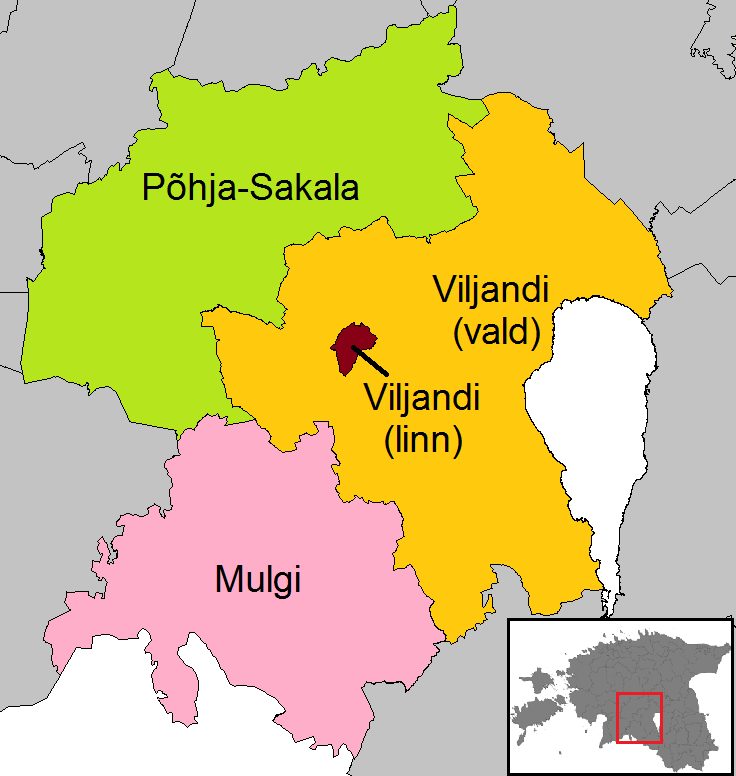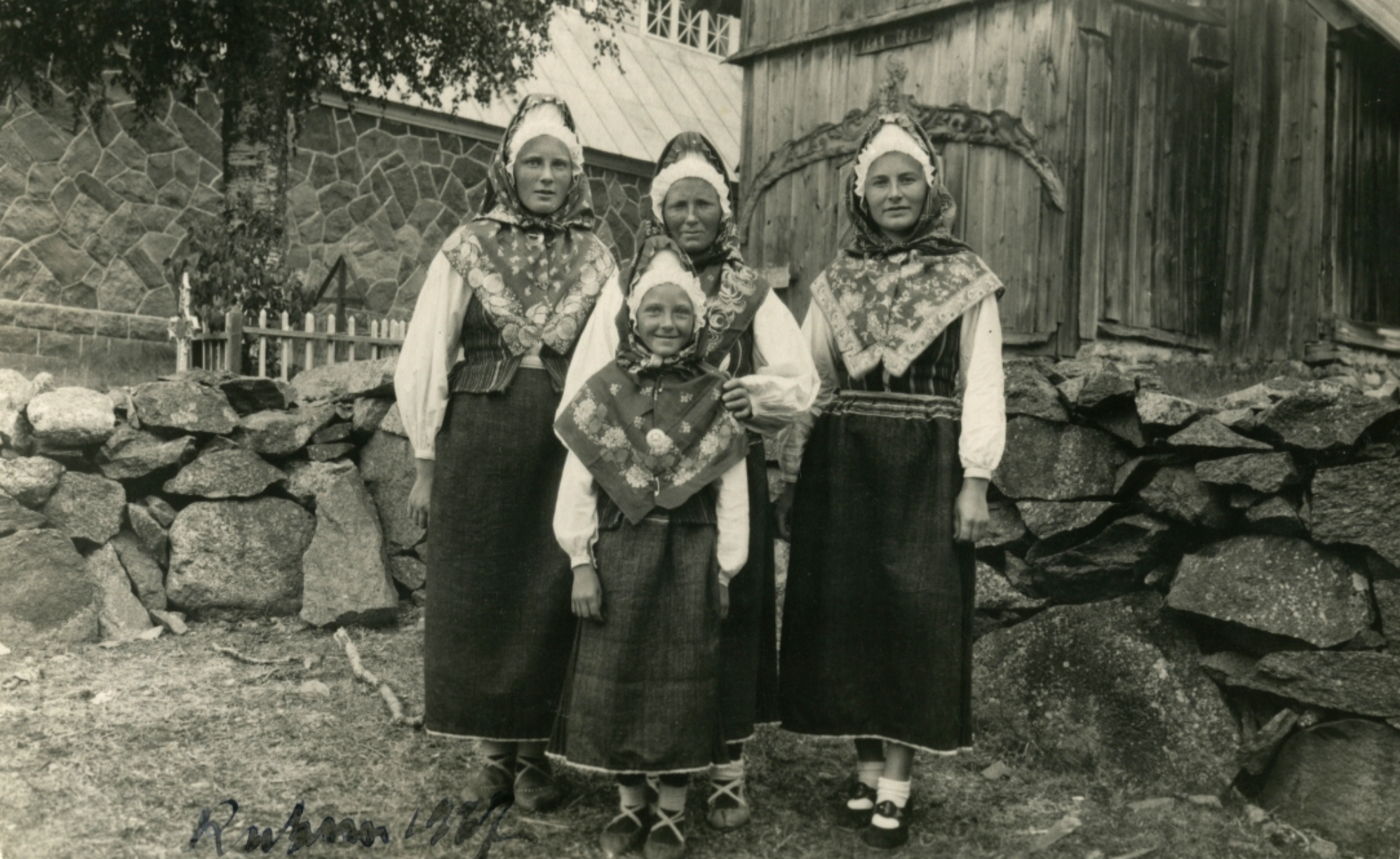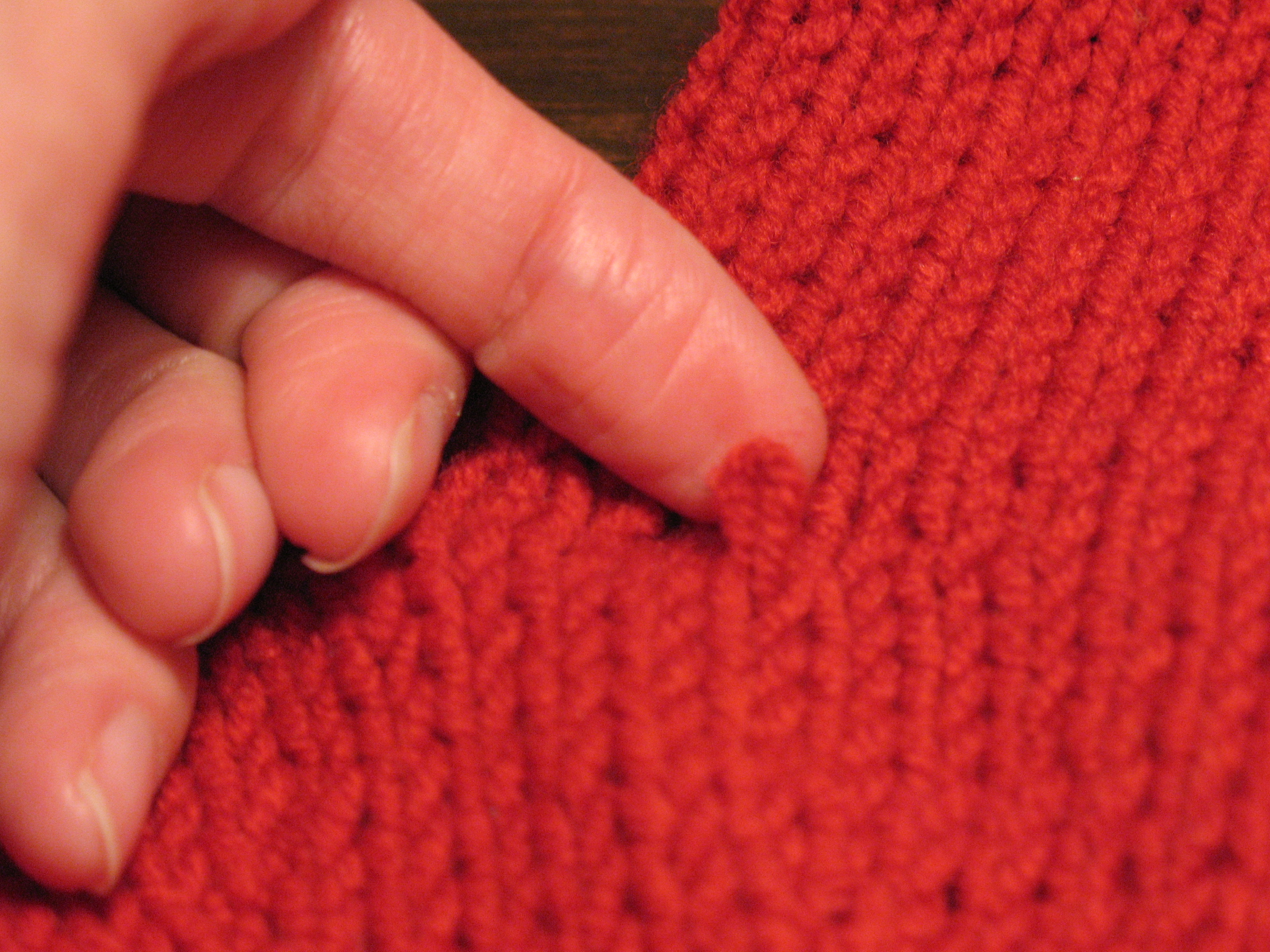|
Roositud
Roositud (, or ), also known as roosimine, Estonian inlay, or knitweaving, is a inlay knitting technique originating from the Estonian knitting tradition, specifically from the southern parts of western Estonia, and the east and north parts of Mulgimaa. It is traditionally only found on socks, stockings, and gloves. Gloves with roositud inlays are called (literally, rose-patterned gloves). Alongside lace knitting, travelling stitches, and stranded colourwork, it was one of the most common design features found in extant samples of 19th and 20th century Estonian mittens in the Estonian National Museum. Unlike other forms of colourwork, which rely on different stitches being knit in different colours, only one colour is knit per round or row in the roositud technique. To produce pre-charted motifs, lengths of the contrasting colour are carried around the wrong (or back) of the knitted round, then pulled between the working stitches and draped across the front (or visible) side of ... [...More Info...] [...Related Items...] OR: [Wikipedia] [Google] [Baidu] |
Inlay
Inlay covers a range of techniques in sculpture and the decorative arts for inserting pieces of contrasting, often colored materials into depressions in a base object to form Ornament (art), ornament or pictures that normally are flush with the matrix. A great range of materials have been used both for the base or matrix and for the inlays inserted into it. Inlay is commonly used in the production of decorative furniture, where pieces of colored wood, precious metals or even diamonds are inserted into the surface of the carcass using various matrices including clear coats and varnishes. Inlay (guitar), Lutherie inlays are frequently used as decoration and marking on musical instruments, particularly the smaller String instrument, strings. Perhaps the most famous example of furniture inlay is that of André-Charles Boulle (1642–1732) which is known as Boulle work and evolved in part from inlay produced in Italy during the late 15th century at the ''studiolo'' for Federico da ... [...More Info...] [...Related Items...] OR: [Wikipedia] [Google] [Baidu] |
Estonian Knitting Tradition
Estonian may refer to: * Something of, from, or related to Estonia, a country in the Baltic region in northern Europe * Estonians, people from Estonia, or of Estonian descent * Estonian language * Estonian cuisine * Estonian culture See also * * Estonia (other) * Languages of Estonia * List of Estonians This is a list of notable people from Estonia, or of Estonian ancestry. Architects * Andres Alver (born 1953) * Dmitri Bruns (1929–2020) * Karl Burman (1882–1965) * Eugen Habermann (1884–1944) * Georg Hellat (1870–1943) * Otto Pius Hip ... {{Disambiguation Language and nationality disambiguation pages ... [...More Info...] [...Related Items...] OR: [Wikipedia] [Google] [Baidu] |
Mulgimaa
Mulgimaa is a cultural-historical region in South Estonia. Today the region encompasses Viljandi County and northwestern Valga County. Historically, Mulgimaa was divided into five parishes (): Halliste, Helme, Karksi, Paistu, and Tarvastu. Traditionally, the South Estonian, Mulgi dialect was spoken in Mulgimaa. References External links * http://www.mulgikultuur.ee/ * https://mulgimaa.ee/ Regions of Estonia {{Estonia-geo-stub ... [...More Info...] [...Related Items...] OR: [Wikipedia] [Google] [Baidu] |
Estonian National Museum
The Estonian National Museum () founded 1909 in Tartu is a museum devoted to folklorist Jakob Hurt's heritage, to Estonian ethnography and folk art. The first items for the museum were originally collected in the latter part of the 19th century. The museum tracks the history, life and traditions of the Estonian people, presents the culture and history of other Finno-Ugric peoples, and the minorities in Estonia. It has a comprehensive display of the 19th century folk costumes from all regions of Estonia. The exhibition includes an extensive array of various handicrafts from hand-woven carpets and linen tablecloths to wood-carved beer tankards and other items illustrating the Estonian farmers' traditional lifestyle, fests and holidays. History The museum opened at Raadi Manor in 1922 with the Finnish ethnographer Ilmari Manninen as its director. Manninen had been working for Tartu University since 1919. The manor had previously been home to a Baltic Germans, Baltic German art c ... [...More Info...] [...Related Items...] OR: [Wikipedia] [Google] [Baidu] |
Tõstamaa
Tõstamaa is a small borough () in Pärnu municipality, Pärnu County, southwestern Estonia. Tõstamaa has a population of 466 (as of 1 January 2020). Tõstamaa St. Mary's Lutheran church was built in 1763–1768. Tõstamaa Manor Tõstamaa Manor () was first mentioned in 1553 as ''Testama'', when it belonged to the Bishop of Ösel–Wiek. Later the owners have been the Kursells, Helmersens and Staël von Holsteins. The Early-Classical two-storey main building was built in 1804. During a renovation in 1997, several original painted ceilings were uncovered. The manor was dispossessed in 1919 and since 1921 a local school ( Tõstamaa Keskkool) is operating in the main building. The most famous inhabitant of the manor is probably orientalist Alexander von Staël-Holstein Alexander Wilhelm Freiherr Staël von Holstein (, 1 January 1877 in Testama manor, Livonia, Russian Empire16 March 1937 in Beiping, China) was a Baltic German aristocrat, Russian and Estonian orientalis ... [...More Info...] [...Related Items...] OR: [Wikipedia] [Google] [Baidu] |
Audru
Audru () is a small borough () in Pärnu municipality, Pärnu County, southwestern Estonia. Before the administrative reform in 2017, Audru was the administrative centre of Audru Parish. At the 2011 Census, the settlement's population was 1,492. Notable residents * Aleksander Kunileid (1845–1875), Estonian composer, was born in Audru. * Adolf Pilar von Pilchau (1851–1925), Baltic German politician, regent of the United Baltic Duchy The United Baltic Duchy (; ; ), or alternatively the Grand Duchy of Livonia, was the name of a short-lived state during World War I that was proclaimed by leaders of the local Baltic German nobility. The attempt to establish a new client state ..., was the owner of Audru Manor. See also * Audru Ring References External linksAudru Parish Boroughs and small boroughs in Estonia Kreis Pernau {{pärnu-geo-stub ... [...More Info...] [...Related Items...] OR: [Wikipedia] [Google] [Baidu] |
Viljandimaa
Viljandi County ( or ''Viljandimaa''; ) is one of 15 counties of Estonia. It is located in southern Estonia bordering Pärnu, Järva, Jõgeva, Tartu and Valga counties as well as Latvia. History Viljandimaa, under the German name of ''Kreis Fellin'', was an important centre of commerce and power in the Middle Ages. Today, there are numerous castle ruins there dating from that time. Soomaa National Park is a national park located partially within Viljandi County, Estonia. Soomaa ("land of bogs") protects 390 km2, and is a Ramsar site of protected wetlands. The park was created in 1993. Retrieved 25 January 2016. County government The Viljandi |
Ruhnu
Ruhnu (; ; ) is an Estonian island in the Gulf of Riga in the Baltic Sea. Its territory of is administratively part of Saare County, Saare ''maakond'' (county). Ruhnu lies geographically closer to the coast of Courland on the mainland of Latvia than it is to any point in the rest of Estonia. With less than 150 official residents, the Ruhnu Parish, Ruhnu ''Parish (administrative division), vald'' (parish) has the smallest population of Estonia's 79 Municipalities of Estonia, municipalities. Before 1944, it was for centuries populated by Estonian Swedes, ethnic Swedes and Law of Sweden, traditional Swedish law was used. Important Bird Area The island has been designated an Important Bird Area (IBA) by BirdLife International because it supports significant numbers of long-tailed ducks and velvet scoters, both wintering and on passage. History The first archaeological artifacts of human activity in Ruhnu, assumed to be related to seasonal pinniped, seal hunting, date back to ... [...More Info...] [...Related Items...] OR: [Wikipedia] [Google] [Baidu] |
Textile Techniques
Textile is an umbrella term that includes various fiber-based materials, including fibers, yarns, filaments, threads, and different types of fabric. At first, the word "textiles" only referred to woven fabrics. However, weaving is not the only manufacturing method, and many other methods were later developed to form textile structures based on their intended use. Knitting and non-woven are other popular types of fabric manufacturing. In the contemporary world, textiles satisfy the material needs for versatile applications, from simple daily clothing to bulletproof jackets, spacesuits, and doctor's gowns. Textiles are divided into two groups: consumer textiles for domestic purposes and technical textiles. In consumer textiles, aesthetics and comfort are the most important factors, while in technical textiles, functional properties are the priority. The durability of textiles is an important property, with common cotton or blend garments (such as t-shirts) able to last ... [...More Info...] [...Related Items...] OR: [Wikipedia] [Google] [Baidu] |
Knitting Stitches
This is a list of knitting Stitch (textile arts), stitches. Common knitting abbreviations as used in patterns are shown in parentheses. Individual stitches * Basic knitted fabrics#Garter stitch, Knit stitch (k) * Purl stitch (knitting), Purl stitch (p) Variations * Elongated stitch (knitting), Elongated stitch * Plaited stitch (knitting), Plaited stitch, also known as a twisted stitch (k tbl, p tbl) * Slip stitch, may be knit or purl stitch (sl, sl st) Increases * Yarn over (yo) * Dip stitch (knitting), Dip stitch which can be either ** A raised increase, knitting into row below (k-b, k 1 b) ** A lifted increase, knitting into the yarn between the stitches (inc, m1) * Knit front and back (kfb) * Purl front and back (, pass slipped stitch over (S1, K1, PSSO) for a left-leaning decrease. * Knit two together through the back loops (K2tog tbl) for a left-leaning decrease. Stitch patterns Knit and purl Basic * Basic knitted fabrics#Garter stitch, Garter stitch * Basic knitt ... [...More Info...] [...Related Items...] OR: [Wikipedia] [Google] [Baidu] |
Knitting Ornaments
Knitting is a method for production of textile fabrics by interlacing yarn loops with loops of the same or other yarns. It is used to create many types of garments. Knitting may be done by hand or by machine. Knitting creates stitches: loops of yarn in a row; they can be either on straight flat needles or in ''the round'' on needles with (often times plastic) tubes connected to both ends of the needles. There are usually many ''active stitches'' on the knitting needle at one time. Knitted fabric consists of a number of consecutive rows of connected loops that intermesh with the next and previous rows. As each row is formed, each newly created loop is pulled through one or more loops from the prior row and placed on the ''gaining needle so'' that the loops from the prior row can be pulled off the other needle without unraveling. Differences in yarn (varying in fibre type, ''weight'', uniformity and ''twist''), needle size, and stitch type allow for a variety of knitted ... [...More Info...] [...Related Items...] OR: [Wikipedia] [Google] [Baidu] |






